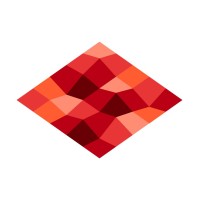Register
Product Overview
Overview
Geoplat AI Machine Learning Workflow provides a different approach to making predictions, modeling relationships and properties in the subsurface from the data itself. Conventional interpretation workflows are rooted in physics. They are implemented through a mix of either detailed expert involvement, or statistical computational modelling at various scales of complexity.
Business Model
SaaS
Technology Innovations
Geoplat AI calculates image segmentation based on previously trained neural network data sets. The convolutional neural network is trained on data samples that cover multiple segments. During the training process, the neural network generates a database that includes identifies different signs of what the client needs.
Applications
- ML Fault Interpretation: The probability of fault presence at each segment point is automatically calculated based on a set of characteristics generated during the neural network training process. It is used to obtain a detailed fault model framework, generating a fault probability field from the data that highlights the fault distribution for all disconnected types within the entire seismic dataset and automatically extracting fault surfaces.
- ML Horizon Interpretation: The trained neural network helps to improve the quality of the seismic data while maintaining the correct amplitude ratio: amplifies the visual display of fault zones, removes noise, restores removed reflections, smoothes effects, etc. seismic horizons using signal characteristics such as peaks, valleys, zero crossings, and automatically tracks sets of stratigraphic horizons within a selected interval.
- ML Seismic Data Conditioning: The trained neural network allows to improve the quality of the seismic data while maintaining the correct amplitude ratio: amplifying the visual display of the fault zones, eliminating noise, restoring "removed" reflections, smoothing effects, etc. As a result, this software makes it possible to eliminate irregular noise, improve the signal-to-noise ratio and increase the visual expression of fault zones.
- ML Salt Bodies Delineation: The tagged data generates a reference data set that accurately describes the defined top and base positions of a salt body, then the neural network compares the chunked data areas during training with the desired characteristics. Then assign the salt probabilities to the original volume segments. In this way, the client gets an automatic interpretation of the horizon optimized for the stratigraphy of salt accumulations and the cutting of the stratigraphic horizon.
- ML Channels and Sand Bodies Detection: It uses the multilayer convolutional neural network that supports a deep learning process on the pre-labeled data samples to identify specific objects as channel bodies. It is used to obtain probabilistic predictive models of channels, sand bodies and other geological objects, detailed interactive interpretation and automatic extraction of geological bodies.
